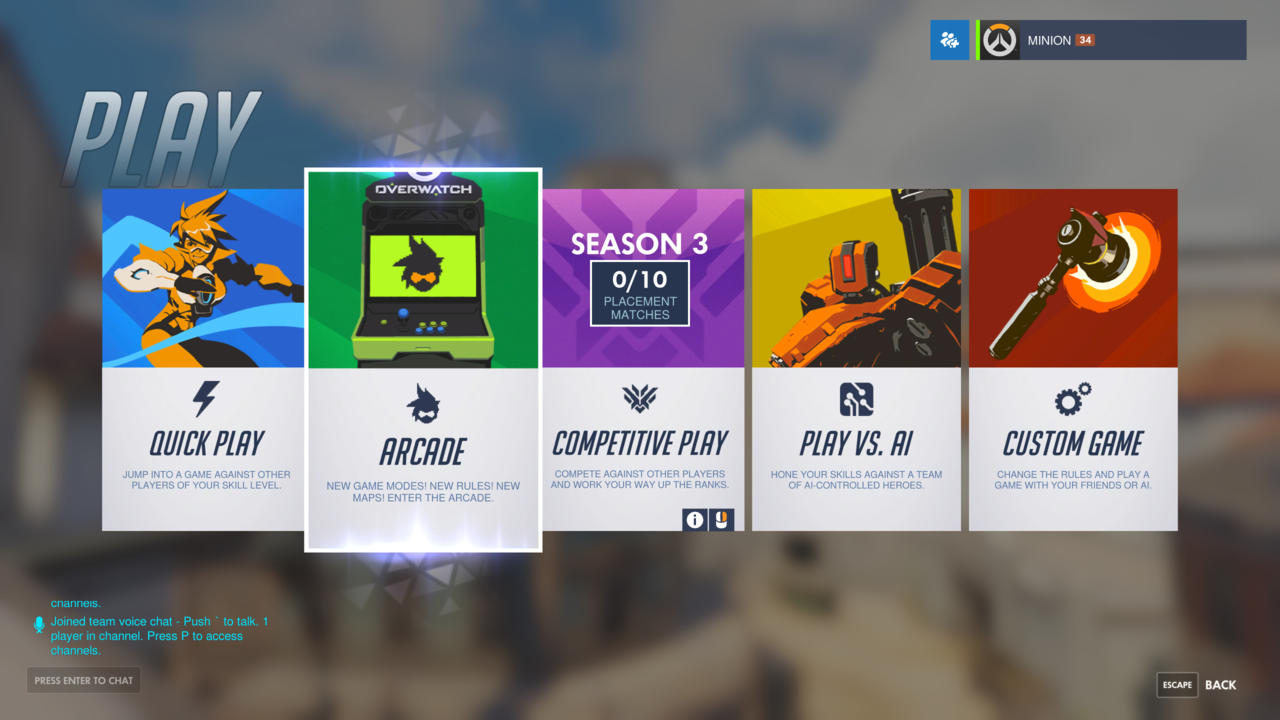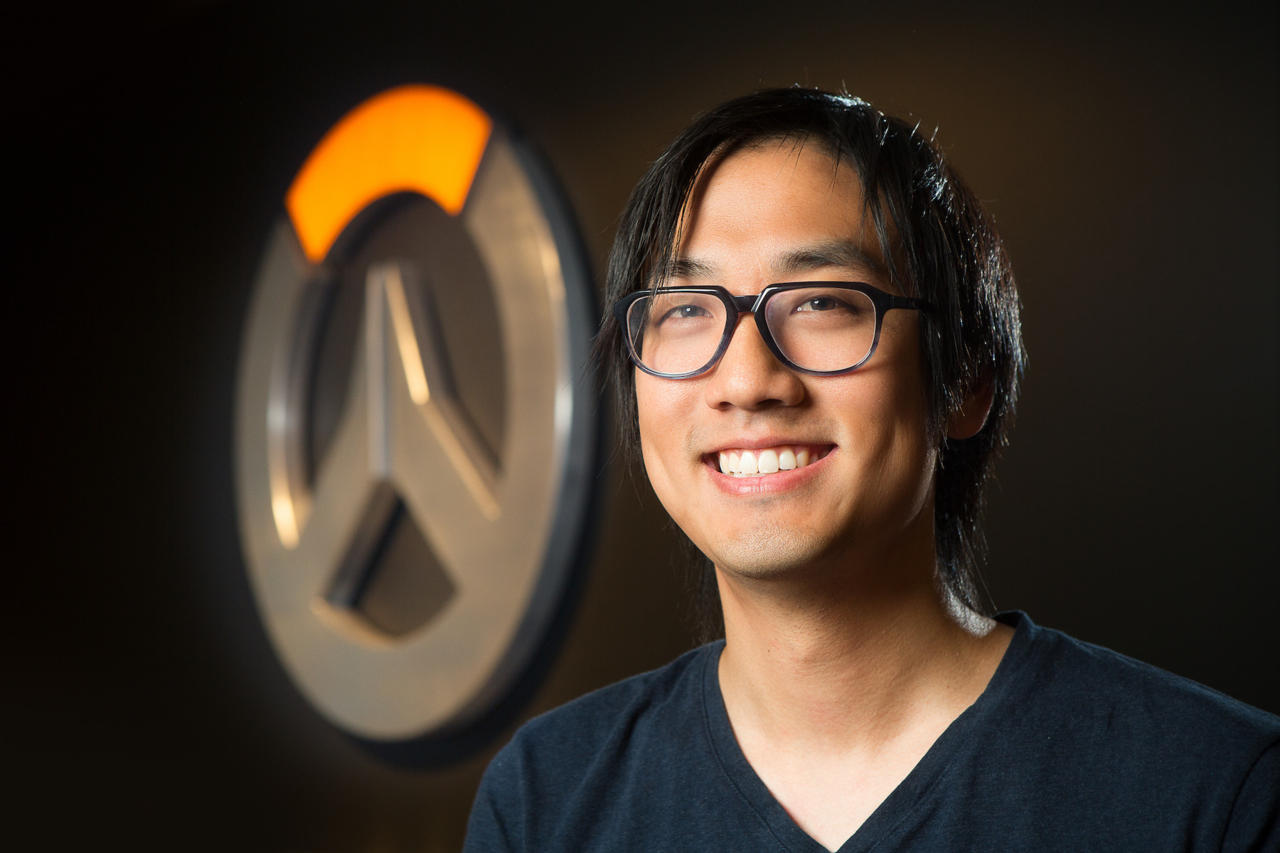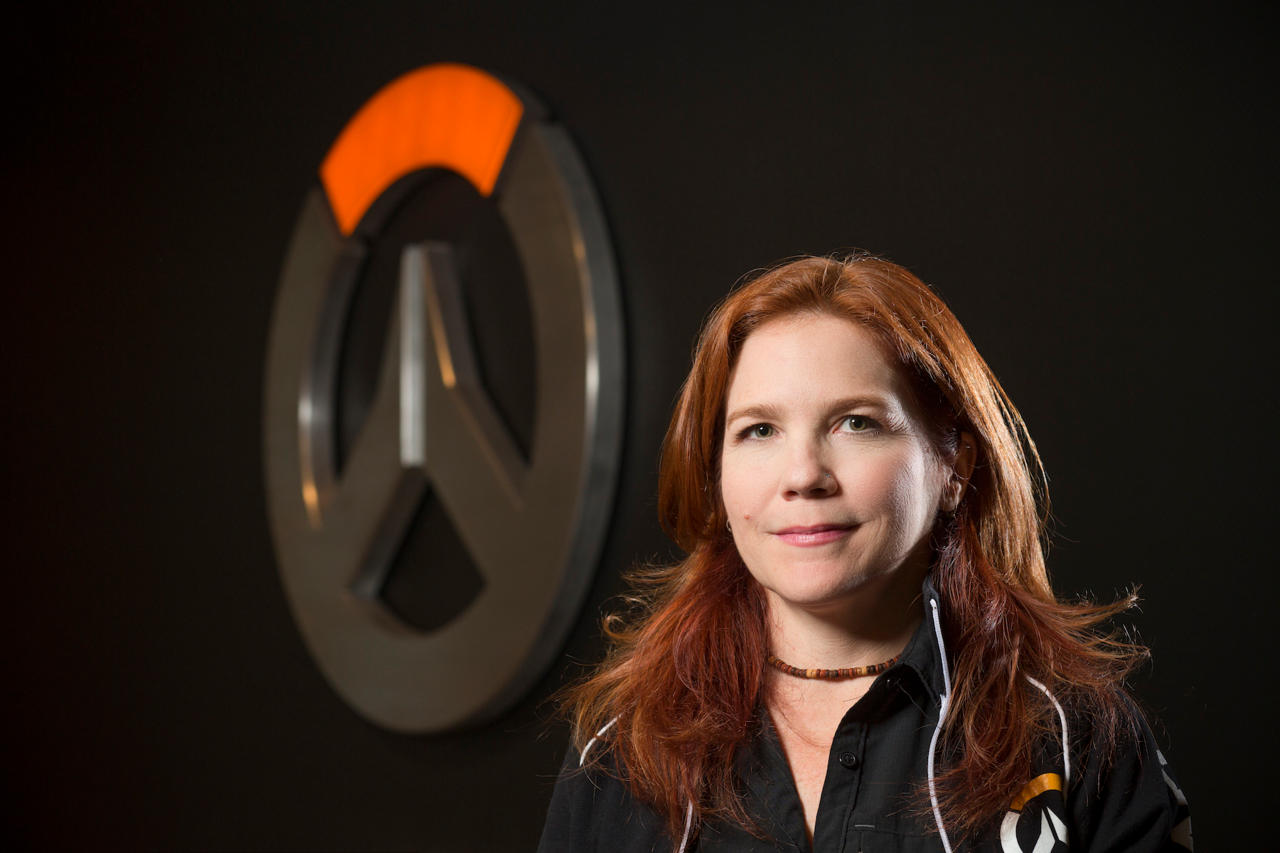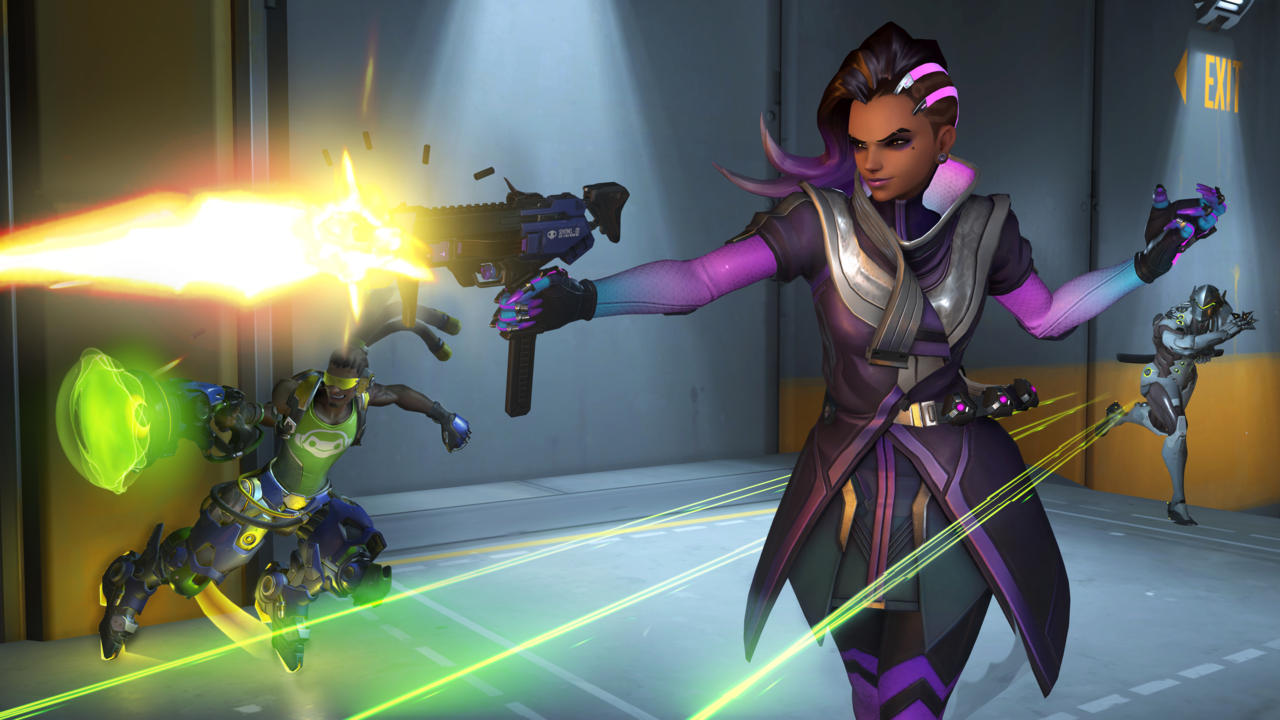Blizzcon 2016 gave us our first official look at the newest addition to the Overwatch roster, Sombra. To get more insight into the character and the developers plans for the shooter, we talked with Overwatch producer Skye Chandler and senior game designer Michael Chu. Read our full interview below!
GameSpot: Playing Sombra today, even though everybody was playing her--6v6 matches of all Sombra-- so it's hard to get a feel for how she's going to be in the main game, but seeing the affects of her powers, she's going to be very disruptive. Even without playing her, some people are already calling for nerfs.
Michael Chu: [Laughs] Obviously, it's still early. Blizzcon is a hard place to get a full grasp on how the character is going to fit into the game, because like you said, you have all these matches where it's like, ten to 12 Sombras. I think that while she is really strong, and she has a really appealing set of abilities, she's definitely not game-breaking. She may be game-changing, it'll be really interesting to see how some of her abilities work in the meta.
One thing I keep thinking about is, her ultimate, EMP--the matches where the other team gets good coordination and throws some ults down, and they're having their moment, and you just initiate with Sombra, it's like, "Scramble. Okay, we've got to come up with something." I think that Sombra, obviously, has some weaknesses. I think she'll be strong, but I think it's really a testament to what our philosophy is on the Hero design, which is that we want all these characters to feel over-powered. Every time you hear about them you're like, "Oh my god, how is that going to work?"

It's also interesting that her invisibility makes her completely invisible. You can't see her at all. Did you guys experiment with giving it a slight shimmer, or doing a Predator thing where you can kind of see it?
Skye Chandler: It actually went through many different phases. Initially, she was completely invisible always. That was her base form, but within certain radius you started becoming visible up to what you see as a teammate now. You could break your own stealth. There were a lot of areas where, either you felt like she wasn't contributing to the team, because you never saw her, or you felt like your entire game was you being tense, thinking somebody is behind you.
There was a big fine line of finding the place where she was really fun to play, but also fun to play against, and what wasn't making people miserable, having an invisi-monster chasing them down.
Playing the game earlier and talking with one of the devs while I was trying to figure Sombra worked, he was saying things like, "You can hack the payload, and a Sombra hologram will appear on top. Whoops, I think maybe they took that out." Or, "When you hack another character you'll be able to see them no matter what, or your teammates will be able to see them." How did that iteration process go for Sombra's abilities? What else did you have to take out?
MC: Sombra has gone through a lot of changes. It's a tricky character to balance. What can hack do? Sometimes she was able to hack things, sometimes she didn't hack things. It's tricky because you're always trying to find the balance between the fantasy, and what works. I think where we arrived is you feel like, "Yep she's a stealthy infiltrator, she's hacking stuff, fantasy fulfilled." It's the way we balance the stealth ability, like Sky talked about earlier. It's tremendously iterative, based on a lot of feedback, and a lot of play testing on the team.
SC: She actually started as a support character, and there was a lot more of the hacking other things. What happened with players when you hacked them. There was no cooldown on hacking, or you couldn't interrupt hacking. It was more like Symettra's primary fire, where you leech onto them. You could just run through and hack everybody, some people were having fun with that. But a lot of the things you were hacking, or able to hack, if you had 15 things hacked, how did you know what, where, when it was going to expire?
Even as a Sombra player that started feeling less fun. Now you felt like you had this list you had to maintain in your head. One of the things is, when we're working on the development of a character, we do a lot of testing. We play them a lot, we play with different kinds of people. See who is having what reaction, and with a lot of the early things where she was hacking more, people were like, "I don't get it. I'm lost. What does this do? This does something different? What does that do?"
In theory, that seemed awesome "Hack all the things!" But as we progressed it was finding out what was more fun, and what was most beneficial to your team, not just what was cool to go and poke at.

After watching the short, my mind was racing with possibilities. "Does this mean levels themselves are going to change? Am I going to be able to hack this wall, and there's going to be a hand that will scoop me up?" Did you have any grandiose ideas like that, or was that just something cool exclusively for the animated short?
MC: Yeah. Maybe not quite so crazy as hacking on that level. I think one of the coolest things about those shorts, actually, is how they integrate the abilities and stuff.
As much as you can tell without spoiling anything, who is Sombra'a biggest nemesis in the cast, and who would be her best friend?
MC: I think she doesn't particularly make friends very well. She definitely fits in that loner archetype, which is a pretty traditional hacker thing I'd say. For her nemesis, she has a few. Obviously, she's up against this mysterious conspiracy. I think that maybe her friends are Reaper and Widowmaker, but they have a very complicated friendship definitely. Winston and Tracer don't liker her, because I don't know if you noticed, but the trans-locator tech looks very much like Tracer's Chrono harness. Honestly, Sombra has made a lot of enemies along the way, but she also does make friends like Katjya.
SC: She seems so fun, and colorful, and everything, but there's a dark side.
MC: It's actually really interesting, because I was reading some threads on the forums, people were like, "Sombra's not really a villain is she?" I was like, "I don't know the definition of villainy if Sombra doesn't fit it." We try and make the characters a little...not so black and white.
Moving over to stuff that we saw in Halloween, like Junkenstein's Revenge--that was such a cool, different way to experience Overwatch. How was that received? Is that something you guys want to keep trying to do?

MC: Well, they're things that people really enjoyed. We had the Overwatch Halloween terror event, we've done two of these now, and they're both very different. I think one of the things that has been really enjoyable for us, is to try different things. I think people have enjoyed that aspect of it.
Is that something that you think you'd revisit yearly, or are those going to be one and done. "We did this this time, we're probably not going to try that similar thing again."
MC: When we start doing these events, we start with nothing. "Okay, we're doing some sort of summer games event. What do we want to do?" Someone has this great idea, "Hey what if we just rigged up this Lucio Ball idea?" We're like, "That's awesome." We run with it. We had that same process, especially after making Lucio Ball, which wasn't in the core Overwatch gameplay. I think when we started working on the Halloween event, we were really able to go say, "Well, what is really exciting?" I think we had this idea that a PVE hold out with this third-person narrator telling a story, was a really fun challenge, and something that felt really good for Halloween. That's how we decide.
SC: One of the things too, is our team works very organically. Junkenstein, and Junkenstein's monster were two skins that we had ideated, and begun work on, months before Halloween. When the Halloween piece started coming together, and decided to do the brawl, it was like, "What if Junkenstein was the instigator of this whole terror? It'd be really neat if he raised all these drones that were going to come and break into the castle." It just exploded from there.
MC: It was funny too, having the skins already existing. I remember there was a moment where it was like, "Okay, we want to do this story thing," and like, "Okay, well here are the pieces I have." How do we work this together?"
I actually thought up a version of the story, which was not directly the the classic Frankenstein story but doing a little twist on it, while still having elements of it. It actually worked out pretty well, obviously Junkrat is a little crazy. It was a really fun challenge trying to get all these puzzle pieces to go in.
SC: The team was so excited putting it together too, because it was something so different than what we'd done before. The guys building the monsters attacking, and the animation team putting together the big pieces, as they were revealed, it was just a blast for everybody.
Did you guys come up with all of the costumes first, and then the idea of how this could fit into a story? How did those ideas go together?
MC: It was a little bit of both. We had some costumes beforehand, and then we had some that we did after we had got rolling on the thing. It was like putting this big puzzle together. We developed the event in a pretty short timeframe. There were a lot of interesting things that we did, we knew that we wanted to do a comic, because we felt like since we were doing a story thing, it'd be hard to set up the specific story of the event within the event by itself. We wanted to tell it outside of the game first.
How popular was this event overall?
SC: Well, it's only our second.
So, it's in the top two.
Nancy Drew: Mystery of the Seven Keys | World Premiere Official Trailer Modern Warfare III & Warzone - Official Cheech & Chong Bundle Gameplay Trailer The Fallout TV Show's Biggest Easter Eggs Teenage Mutant Ninja Turtles: Splintered Fate – Announcement Gameplay Trailer Dead Island 2 – Official SoLA Expansion Gameplay Launch Trailer Little Kitty, Big City – Release Date Reveal Harold Halibut GameSpot Video Review SteamWorld Heist II – Official Reveal Gameplay Trailer Cat Quest III - Release Date Trailer LORELEI AND THE LASER EYES | Release Date Trailer Honkai: Star Rail — "Non-Zero-Sum Game" | A Moment Among the Stars Animated Trailer Stellar Blade - Official Live Action Release Date Trailer| PS5
Please enter your date of birth to view this video
By clicking 'enter', you agree to GameSpot's
Terms of Use and Privacy Policy
SC: [Laughs] Technically it did blow the doors off of summer games a little bit. I think too though, it was because it was so different. Summer games, we couldn't go as far as we could go with Junkenstein. We we're able to do more of the epic level skins, we we're able to get more pieces in, the story elements. Everything like that. I think impact-wise, it definitely hit a little bit harder, just because we had a little bit more time.
With Junkenstein's standalone comic, did you think about making those parts of the story interactive at all? Bringing that part of the experience into the game?
MC: At the end of the day, Overwatch is a multiplayer, team-based game. I think we can bring elements of it in, in their dialogue, in the levels, in the environmental storyline. I think doing a traditional linear narrative, it doesn't make sense right now. I think we'll probably keep those big traditional plot elements, and moving the story forward, we'll probably remain outside of the game. But I think they will always be closely linked with stuff that's happening in the game. I
It's not necessarily just like, "Oh, in this map we can see some evidence of the story." I think also, when we decide what maps we're going to make, we think, "This map could push this part of the story forward."
How have you felt about the approach to storytelling so far, the small ways that you're feeding it out? And how deep do you see that rabbit hole going?
MC: Well, think it can go quite a bit deeper. It's really interesting. It was a solution that was born out of the kind of game we were making, because multiplayer shooter, obviously usually doesn't have a linear story. We had to think about other things, and we knew from day one that we wanted to make a significant Overwatch universe. We wanted to build out this world, we wanted these characters to have stories, and backstories, and history, and everything.
I think the way that we chose to deliver it, in this sort of pieced out manner, has been good, and we would love to do more of it. I'm always excited any time we have a new comic, or a new origin movie, or an animated short. We want to hit all the main beats like, "Okay, we're doing a Sombra episode." But we also try and see what other stuff we can get into, so that every time you get a window into Overwatch, you're not just getting your one story.
You're also getting a lot of context, and slowly the universe feels like it's getting deeper. We have a lot of plans.
SC: There are a lot of places too, where we've actually gone both backwards, and forwards as far as adding little touches of narrative to the maps, and the world. Even though you can't really tell the story there, just adding little pieces that tie it back to the other things that we're putting together, I think makes a big difference. Makes you feel like you're more immersed in the universe that's growing, and you get to grow with it.
MC: I think one of the things that has been really successful, is the way the story comes out is slightly like a puzzle. You get different pieces, not necessarily in any order, but I think there is one thing where when you get the context that you didn't have before, you get a light bulb. I was just reading someone that said, "Widowmaker always said, "Ah the sight of one my best kills" or whatever, on Kings Row. Until the live short came out, it wasn't really clear what she was talking about. Then you watch the movie and you're like, "Oh, Widowmaker!" Then a couple days later you're playing her, and she says that, and you're like. "(gasps)"
We try and be pretty fair with the audience.
Ever since the very first short came out, people have definitely wanted to see more. As one of the writers, have you already put together a mock movie script, and you're just trying to get somebody to make it? Is it about waiting and feeding that out at the right time?
MC: I can't talk too much about the future. Every time we approach a story, very much like the skins, we have this backlog of story ideas, and hooks that we'd like to explore. We decide which ones we feel are the most exciting or make sense for the present. Like if we do a comic, comics are better for telling certain types of stories. Animated shorts are better at certain type of things, and you get things like the origins video, which are sort of that 2.5D, those are good at getting into a characters psyche.
We really decide what kind of story we want to tell, what's the story that we're going to tell, and then it's all about, lets figure out the best way to do this.
SC: A lot of it comes back to that organic development process. Even Ana for instance. What she was when she began, or what that character was when it began, and that Ana became Pharah's mother, and this intricate story that formed around her being where she is now in the universe, it was a really interesting thing, watching it grow together. It started affecting how the design was going. Initially it was going to be a like a hazmat thing.

Then from there, because we'd already met Pharah's mom from back in the day, we were like, "What if she came back?" They started putting together pieces like, "The tech came from the same place that Mercy's tech came from." Now that affects how the design and the VFX are going to play out. It's really interesting watching all of the pieces, because our team is very communicative.
Seeing all those elements come together is really amazing. It's like, "That's perfect! That's great too!" It's a very unique experience in game development.
MC: That is actually a great example, because when we started making Pharah initially, we knew back then that her parents were always going to be an important part of her story. Specifically, I think in the second conversation Chris and I had about Pharah, we were like, "Oh yeah, her mom was a really important Overwatch member." We had this idea that their relationship was sort of fraught. We had these basic ideas set out, but then when we decided that we could develop her, then we were able to fill in some of these points that we had figured out.
At first I was sad that we'd never be able to make her a sniper, because we had Widowmaker, and we were like, "We already have a sniper. I don't think the game needs another deadly sniper." Then from the game design team, Jeff Goodman, our lead hero designer said, "I want to do this support sniper." And we said, "We found a way. We can do it." It's really interesting how these things grow over time, and develop.
















